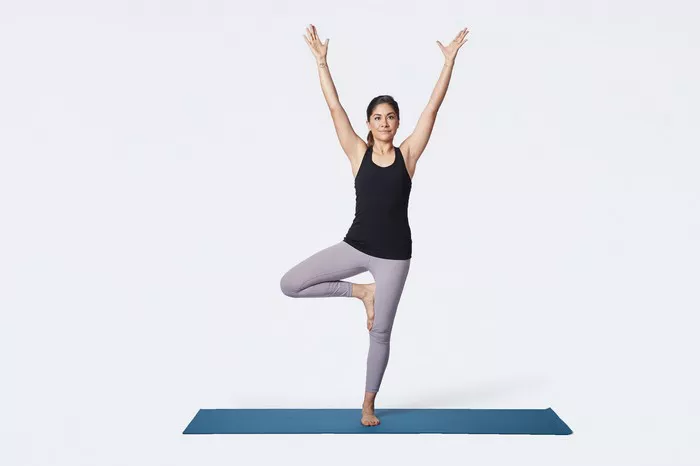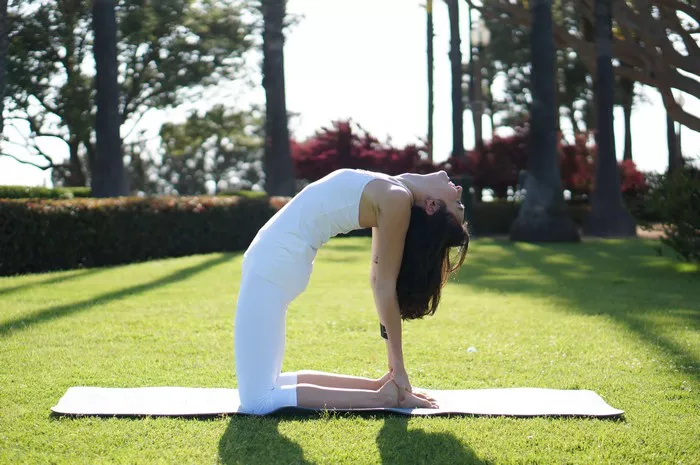Yoga is a discipline that has gained immense popularity worldwide, not just as a way to increase flexibility and reduce stress but also for its ability to build strength and balance. Among the many benefits of yoga, one area where it is often praised is in its ability to strengthen the core. But how exactly does yoga help with core strength? Is it really as effective as other forms of exercise, such as weight training or Pilates, in targeting and strengthening the muscles of the core?
In this article, we will explore the importance of core strength, understand the anatomy of the core, and delve into how yoga contributes to strengthening this crucial area of the body. We will also examine which yoga poses are particularly beneficial for core strength, how to practice them correctly, and what kind of results you can expect from regular yoga practice. By the end of this article, you should have a clear understanding of why yoga is an excellent option for core strengthening, how it compares to other exercises, and how you can incorporate yoga into your fitness routine to enhance your core strength.
What Is the Core and Why Is It Important?
Before we explore how yoga can strengthen your core, it’s important to understand what the “core” refers to in anatomical terms. The core consists of the muscles in your abdomen, lower back, pelvis, and hips. These muscles work together to stabilize the spine and support movements of the trunk. The core is essential for virtually every physical activity, from walking and running to lifting and even sitting. Core strength is fundamental not only for athletic performance but also for daily tasks, improving posture, and preventing injury.
The core is often thought of as just the abdominal muscles (the “six-pack”), but it actually includes a much broader group of muscles, including:
Rectus Abdominis: The large, paired muscle that runs vertically down the front of the abdomen, often associated with the “six-pack.”
Obliques (Internal and External): These muscles run diagonally along the sides of the torso and are responsible for rotation and lateral flexion of the spine.
Transverse Abdominis (TA): This deep abdominal muscle wraps around the torso and acts like a corset, providing support to the spine and pelvis.
Erector Spinae: These muscles run along the spine and help extend the back.
Multifidus: A series of small muscles along the vertebrae that help stabilize the spine.
Pelvic Floor Muscles: A group of muscles that support the organs of the pelvis and assist in stabilizing the lower body.
A strong core is vital for maintaining good posture, preventing back pain, and supporting a healthy range of motion during various movements. Moreover, a strong core is the foundation for building overall strength and power in the body.
Can Yoga Strengthen Your Core?
Yoga is known for its focus on breathing, balance, flexibility, and mindfulness. But it also places a strong emphasis on building strength—especially in the core. Many yoga poses require you to engage the muscles of the core for stability, control, and alignment. In fact, nearly every yoga pose involves some level of core engagement, whether it’s holding a pose or transitioning between movements.
There are several ways in which yoga contributes to core strength:
Isometric Contractions: Many yoga poses require you to hold a position for an extended period of time, engaging your core muscles in isometric contractions (holding the muscles at a steady length without movement). This builds endurance and stability in the muscles of the abdomen, lower back, and pelvis.
Dynamic Movements: Yoga poses often involve flowing movements, such as in vinyasa or flow-style yoga. In these sequences, you shift your weight and transition between poses while maintaining control of your core. This dynamic engagement helps develop strength, coordination, and balance in the core.
Postural Alignment: Yoga encourages proper body alignment, which often involves engaging the core muscles to support the spine. In poses like Tadasana (Mountain Pose) and Utkatasana (Chair Pose), yoga practitioners are taught to draw the navel in and up toward the spine, engaging the abdominal muscles and the deeper core muscles.
Mind-Body Connection: One of the core principles of yoga is developing a strong mind-body connection. By focusing on breath and body awareness, you can learn to engage your core more effectively and deeply. This mindful engagement of the core muscles helps improve both strength and endurance over time.
Core-Strengthening Yoga Poses
While many yoga poses engage the core, some are particularly effective at targeting and strengthening the muscles of the trunk. Here are several core-strengthening poses commonly used in yoga practice:
1. Plank Pose (Phalakasana)
Plank Pose is one of the most effective poses for building core strength. In this pose, you hold a straight line from your head to your heels, engaging the muscles of the abdomen, lower back, and pelvis. Plank challenges both the front and back of the body, helping to develop a balanced and strong core.
How to Practice: Start in a push-up position, with your hands directly under your shoulders and your feet hip-width apart. Press your palms into the mat, engage your abdominals, and keep your body in a straight line from your heels to your head. Hold for 30 seconds to 1 minute, or as long as you can maintain proper form.
Benefits: Strengthens the entire core, improves stability, and helps develop upper body strength.
2. Boat Pose (Navasana)
Boat Pose is a seated pose that targets the abdominal muscles, especially the rectus abdominis, transverse abdominis, and hip flexors. This pose is great for building both core strength and balance.
How to Practice: Sit on the floor with your knees bent and your feet flat on the ground. Lean back slightly, lifting your legs to a 45-degree angle and straightening them if possible. Reach your arms forward, keeping your spine long and your chest open. Hold the pose while keeping your core engaged.
Benefits: Strengthens the abdominal muscles, improves posture, and enhances balance.
3. Downward-Facing Dog (Adho Mukha Svanasana)
Downward-Facing Dog is a fundamental yoga pose that involves a strong engagement of the core to stabilize the spine. In this inverted V-shape, you engage the abdominals, lower back, and shoulders to maintain the position.
How to Practice: Start on your hands and knees. Lift your hips up and back, straightening your legs and pressing your heels toward the floor. Keep your hands shoulder-width apart and your feet hip-width apart. Engage your core to maintain a stable and balanced position.
Benefits: Strengthens the entire core, stretches the back, and improves overall body coordination.
4. Warrior III (Virabhadrasana III)
Warrior III is a balancing pose that requires significant core engagement to stabilize the body. By balancing on one leg and extending the body forward, you activate both the deep and superficial muscles of the core to maintain alignment and balance.
How to Practice: Start in a standing position and step one foot back. Lift your back leg behind you while extending your arms forward. Keep your body in a straight line from your fingertips to your back heel, engaging your core to maintain balance.
Benefits: Strengthens the core, improves balance, and targets the lower back, hips, and legs.
5. Side Plank (Vasisthasana)
Side Plank is a variation of the traditional plank that targets the obliques and the sides of the body. This pose requires significant core strength and stability to keep the body aligned and balanced on one hand and one foot.
How to Practice: Start in a regular plank position. Rotate your body to one side, stacking your feet and lifting your top arm toward the sky. Keep your body in a straight line and engage your core to maintain stability.
Benefits: Strengthens the obliques, improves balance, and tones the entire core.
6. Locust Pose (Salabhasana)
Locust Pose is a backbend that targets the lower back and the posterior core muscles. While this pose focuses on strengthening the back, it also engages the abdominal muscles, providing a balanced approach to core strengthening.
How to Practice: Lie face down on the floor with your arms by your sides. Lift your chest, arms, and legs off the ground while keeping your gaze forward and your core engaged.
Benefits: Strengthens the lower back and the entire core, improves spinal alignment, and promotes flexibility in the chest.
See Also: Does Yoga Change Your Body?
How to Maximize Core Strength with Yoga
While yoga is excellent for strengthening the core, there are several strategies you can use to get the most out of your practice:
Consistency is Key: To build core strength, you need to practice regularly. Aim for at least three to four yoga sessions per week to see noticeable improvements.
Focus on Alignment: Proper alignment is crucial in yoga. Engaging the core muscles during every pose, even the simplest ones, will help activate the muscles you want to strengthen.
Challenge Yourself with Variations: If you’re already comfortable with basic poses, challenge yourself by trying more advanced variations or holding poses for longer periods of time. Incorporating props like blocks or straps can also add an extra level of intensity.
Integrate Core-Focused Sequences: In your yoga practice, incorporate sequences that specifically target the core. These could include a combination of plank variations, boat pose, side plank, and backbends.
Breath Awareness: Always connect your breath with your movement. Engaging your core while breathing deeply will help you stabilize the torso and increase strength.
Conclusion
Absolutely! Yoga is an incredibly effective and holistic way to strengthen your core. The combination of stability, dynamic movement, mindfulness, and deep core activation that yoga offers makes it an ideal practice for developing a strong and stable core. Whether you’re a beginner or an experienced practitioner, yoga provides a variety of poses and techniques that can be tailored to your fitness level and goals.
By regularly incorporating core-strengthening yoga poses into your practice, you can enhance your posture, improve balance, prevent injury, and support overall strength and flexibility. With time and dedication, yoga can be an excellent complement to other forms of exercise or a standalone practice for achieving a strong, resilient core.
So, if you’re looking to strengthen your core, yoga is not only effective—it’s a mindful, accessible, and enjoyable way to build lasting core strength.
You Might Be Interested In:






















